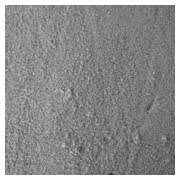Phenol formaldehyde foam by using aromatic hydrocarbon polyester polyol as toughener and preparation method thereof
A technology of polyester polyol and phenolic foam, which is applied in the field of new materials, can solve the problems of phenolic foam with low toughness, poor molecular chain flexibility, and influence on popularization and application, and achieve high compressive strength, improved toughness, and improved mechanical properties.
- Summary
- Abstract
- Description
- Claims
- Application Information
AI Technical Summary
Problems solved by technology
Method used
Image
Examples
Embodiment 1
[0031] Example 1 The phenolic foam using aromatic polyester polyol as a toughening agent is mainly prepared from the following mass ratio raw materials, 40 parts of toughened modified phenolic resin; 4 parts of surfactant water-based silicone oil; composite foaming 6 parts of agent; 8 parts of mixed acid curing agent.
[0032] Add phenol / formaldehyde in a certain molar ratio to a three-necked flask equipped with a condenser, an electric stirrer and a thermometer, start the stirrer and heat in a water bath; after the mixture in the bottle is preheated and stirred evenly, add a certain amount of 20% sodium hydroxide The solution is used as a catalyst, adjust the pH=9, add triphenyl phosphate, slowly raise the temperature, after the temperature of the mixture in the bottle reaches 85°C-90°C and keep it for 1 hour, add 3% (accounting for phenol mass) phthalic anhydride polyester polyol, use Adjust the pH of the reaction solution to 5 with formic acid, continue to react at 85°C-90°...
Embodiment 2
[0034] Example 2 The phenolic foam using aromatic polyester polyol as a toughening agent is mainly prepared from the following mass ratio raw materials, 50 parts of toughened modified phenolic resin; 2.5 parts of surfactant water-based silicone oil; composite foaming 4 parts of agent; 6 parts of mixed acid curing agent.
[0035] Add phenol / formaldehyde in a certain molar ratio to a three-necked flask equipped with a condenser, an electric stirrer and a thermometer, start the stirrer and heat in a water bath; after the mixture in the bottle is preheated and stirred evenly, add a certain amount of 20% sodium hydroxide The solution is used as a catalyst, adjust the pH=9, add triphenyl phosphite and slowly raise the temperature, after the temperature of the mixture in the bottle reaches 85°C-90°C and keep it for 1 hour, add 5% (accounting for phenol mass) phthalic anhydride polyester polyol, Use formic acid to adjust the pH of the reaction solution to 5, continue to react at 85°C-...
Embodiment 3
[0037] Example 3 The phenolic foam using aromatic polyester polyol as a toughening agent is mainly prepared from the following mass ratio raw materials, 70 parts of toughened modified phenolic resin; 3.5 parts of surfactant water-based silicone oil; composite foaming 5 parts of agent; 7 parts of mixed acid curing agent.
[0038] Add phenol / formaldehyde in a certain molar ratio to a three-necked flask equipped with a condenser, an electric stirrer and a thermometer, start the stirrer and heat in a water bath; after the mixture in the bottle is preheated and stirred evenly, add a certain amount of 20% sodium hydroxide The solution is used as a catalyst, adjust the pH to 9, add triphenyl borate and slowly raise the temperature, after the temperature of the mixture in the bottle reaches 85°C-90°C and keep it for 1 hour, add 10% (accounting for phenol mass) of phthalic anhydride polyester polyol, use Adjust the pH of the reaction solution to 5 with formic acid, continue to react at...
PUM
 Login to View More
Login to View More Abstract
Description
Claims
Application Information
 Login to View More
Login to View More - R&D Engineer
- R&D Manager
- IP Professional
- Industry Leading Data Capabilities
- Powerful AI technology
- Patent DNA Extraction
Browse by: Latest US Patents, China's latest patents, Technical Efficacy Thesaurus, Application Domain, Technology Topic, Popular Technical Reports.
© 2024 PatSnap. All rights reserved.Legal|Privacy policy|Modern Slavery Act Transparency Statement|Sitemap|About US| Contact US: help@patsnap.com










